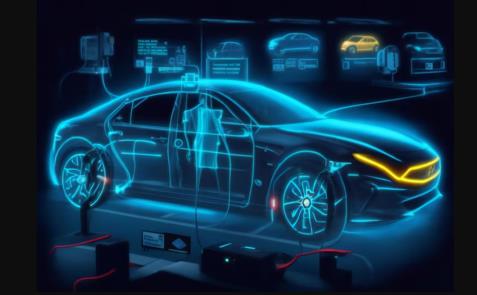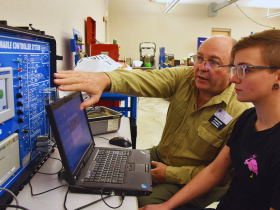The automobile industry has consistently been at the forefront of technological innovation, leveraging advances to enhance vehicle performance, safety, and environmental sustainability. Each technological leap, from the inception of the combustion engine to the integration of artificial intelligence, has revolutionized how we view and use vehicles. This article explores the latest trends and innovations in automobile technology, offering a glimpse into the future of transportation Automobile Technology.
Electrification of Vehicles: Towards a Greener Future
One of the most significant shifts in the automotive industry is the move towards electrification. Environmental concerns and stringent emission regulations have driven the development of electric vehicles (EVs). Modern EVs are not only environmentally friendly but also increasingly affordable and efficient, thanks to advancements in battery technology. Lithium-ion batteries, with their high energy density and longer lifespans, are making EVs more accessible to the average consumer.
Fast charging technology
As EV adoption grows, so does the need for fast charging solutions. Companies are developing ultra-fast charging stations that can charge EV batteries to 80% in just minutes, akin to the time it takes to refuel a traditional car. This development is crucial to addressing range anxiety and making electric cars more practical for long-distance travel Automobile Technology.
Autonomous Driving: The Path to Self-Driving Cars
Autonomous driving technology is perhaps one of the most anticipated developments in the automotive sector. This technology promises to transform our roads by reducing human error, which is the leading cause of traffic accidents.
Levels of autonomy
Level 0 (no automation) to Level 5 (full automation) are the levels into which autonomous vehicles fall. Most current systems are at Level 2 or Level 3, where cars can handle some driving tasks but still require human oversight. Advancements in sensor technology, data analytics, and machine learning are rapidly pushing the boundaries towards Level 4 and Level 5 autonomous vehicles Automobile Technology.
Vehicle-to-Everything (V2X) Communication and Connectivity
Connectivity is another area in which technology is making significant strides. Vehicle-to-Everything (V2X) technology enables vehicles to communicate with each other as well as with road infrastructure. This communication enables cars to “see” around corners, through other vehicles, and into blind spots, significantly improving reaction times and reducing collisions.
Enhanced Navigation and Traffic Management
Connected vehicles can access real-time traffic data, adjust routes on the fly to avoid congestion, and even optimize traffic flow by communicating with traffic signals. This not only improves the driving experience but also reduces fuel consumption and emissions Automobile Technology.
Advanced Driver-Assistance Systems (ADAS): Elevating Road Safety
Advanced driver-assistance systems (ADAS) are technologies used to augment driver performance and ensure vehicle safety. These systems use an array of sensors, such as radars, cameras, and ultrasonic devices, to monitor the vehicle’s surroundings and provide critical information to the driver.
Adaptive cruise control and lane keeping
Adaptive cruise control and lane-keeping assistance are prime examples of ADAS that enhance driving safety and comfort. These systems automatically adjust the vehicle’s speed to maintain a safe distance from the car ahead and ensure the vehicle stays within its lane, significantly reducing the driver’s workload on long trips Automobile Technology.
The impact of big data and AI on automobiles is significant.
Big data and artificial intelligence (AI) are transforming the automotive industry by enabling more personalized, seamless, and interactive driving experiences.
Predictive Maintenance
AI algorithms enable vehicles to anticipate part failure and the need for maintenance, thereby preventing breakdowns and lowering maintenance costs. This predictive capability ensures higher vehicle uptime and enhances safety Automobile Technology.
Conclusion
The future of automobile technology is not just about electrification or automation but a comprehensive overhaul of the transportation ecosystem. Innovations such as fast charging, autonomous driving, V2X communications, and AI-driven predictive maintenance are shaping a new era where vehicles are safer, more efficient, and environmentally friendly. As these technologies continue to evolve and integrate, the dream of smart, connected transportation Automobile Technology.




